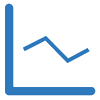We hope 2022 has been good to your trading! It has been our pleasure to help many traders this year and we will surely continue to do so in 2023!
The last coupon codes of the year are still on for a few more hours. Make sure you check them out and have all the right tools ready for business in the next year (and at this year's best prices).
Lastly, allow us to wrap up the year with what was our last trade in 2022: a humble but rock-solid 1R (or just about) on 6J. Apart from the trade, the chart demonstrates the crystallization of 15 years of work in understanding how markets move. Note
the clean, beautiful, no-nonsense, distraction-free visual environment
that tracks price in what is a meaningful way to us
and measures what we need (and only what we need)
to predict crowd behaviour with statistical reliability.
If you’re into the details (and you should be: in trading the details are everything), you will notice how we quantify crowd behaviour (including setups and triggers) with just a few mathematical calculations. Our charts show everything we need, like an X-ray to the surgeon.
So that we’re clear here, there are two kinds of technical analysis out there: the hocus-pocus type and the quantitatively (statistically) driven type. We chose, many years ago, to practice the latter. And we suggest you do the same. Same as with astronomy and astrology: the first takes you to the Moon, the second takes you to page 37 of Saturday’s Toronto Star.
Can you learn to read our charts and learn to act (and often: not to act) wisely? Yes! And one of the best ways is by adopting our zen-like software in your trading office and, to shorten the learning curve, joining us in the trenches daily. You will see it’s not that mysterious after all: our methodology yields setups, which yield triggers, which yield our execution technique. We took 15 years to crystallize our method, so you won’t have to, and we have built software to execute that method, so you won’t have to. So there you go, we’ve said it.
Will our method last?, you may ask. We don’t know. Nobody knows. Statistical edges are liable to change and the best traders are just as smart and sharp-eyed as we are :), and probably better-endowed. So it is part of our job to monitor the effectiveness of our edge and adjust the finer details as necessary (which is why we have certain adjustable settings in our software in the first place).
But what we do know: our edge is based in crowd psychology, in other words; humans’ response to hope and fear. And that is something that is not likely to change overnight… In fact, you can go back in time, look at old charts, and will find that what we do today would have worked in 1894, 1903 or 1932 as well, although nobody used charts then and nobody knew any of the measuring tools we use today! (And while we’re at it: nothing will boost your trading more than doing your own backtesting on pre-computer-era charts: no Keltners, no RRRs, no MACD, people used none of that stuff back then, still you’d be surprised how well our method would have worked, most likely, because people’s responses to extreme price movements have not changed, from Florence to Osaka, perhaps in millennia.)
Interesting stuff, and we could go on… but I guess we’ve made our point: learn what we do, get what we do it with, add w̶a̶t̶e̶r̶ capital and skills, and you've most-likely set yourself up for an almost-inevitable success.
Hope to see you around, and Happy New Year to us all!

